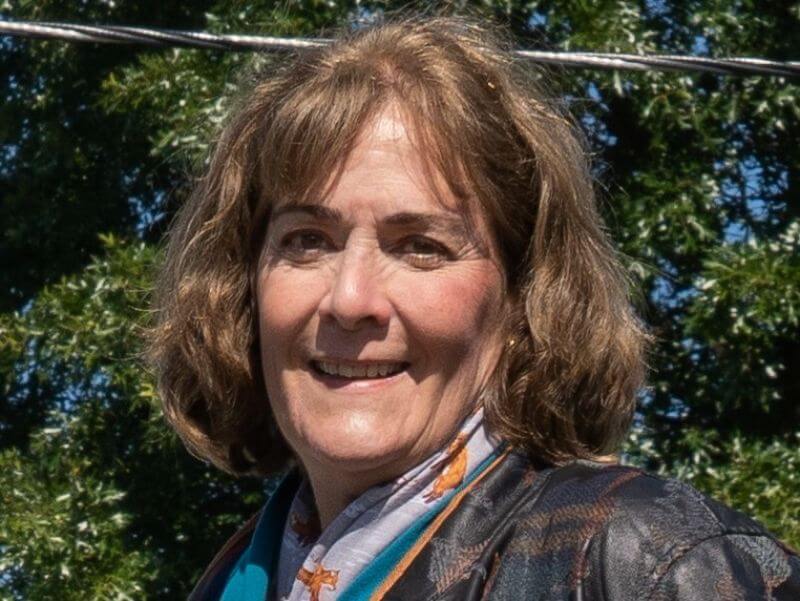
Home » Candace Lundin, DVM, MS | D.B.F. Russell Terriers

Candace Lundin: I am a retired equine veterinarian, part-time small animal relief veterinarian, and a freelance medical publications editor for human pharma. My husband, Frank Zureick, and I live in a rural area outside Middletown, Virginia, where we breed and show Russell Terriers under the prefix D.B.F. Russell Terriers. The D.B.F. stands for Dog Branch Farm, named for our previous Thoroughbred horse farm that had a creek running through it called Dog Branch Creek.
We have bred (Jack) Russell Terriers for a little over 20 years, beginning 10 years before the Russell Terrier breed became recognized in AKC. Frank had bred and shown English Springer Spaniels under the Northminster prefix in the 1980s and so, when the Russell Terrier moved into the Foundation Stock Service (FSS) of the AKC in 2009, we became more serious about developing a correct type for show. We had produced some top Thoroughbred racehorses previously and now we used a similar formula for dog breeding. We imported males from Australia, Sweden, Japan, Russia, Poland, Italy, Germany, and France, acquiring one from each of the best lines in FCI.
By the time the Russell Terrier achieved full recognition, we were ready with our offspring so that the first male and first female Champions in AKC for the breed were our American-breds—D.B.F. Trophy Wife and Dog Branch Farm’s Hez On Top. Since then, we have bred ten different Group One Winners, over 100 AKC Champions, and the most recent National Specialty Winner. Due to the importance of the international contributions to this relatively new AKC breed, we also participate in the World Dog Shows where there might be Jack Russell entries as high as 300 in some years, with participants from all the top kennels. We are proud to have produced the only American-bred World Winner and two Junior World Winners.
Candace Lundin: The (Jack) Russell Terrier is unique in that it existed for 125 years before any kennel club recognition. This is the reason for such a widely varying type and inconsistent type, because they were not being bred to a conformational standard but rather for working in various terrains, and so, size and shape varied. Improvements are slowly being made in TYPE, but it’s slow-going.
Novice breeders or even experienced breeders coming from other breeds tend to expect that if they put two top-winning Russells together, they can expect several show quality pups in the litter… and they may appear to be that at 12 weeks when sold for show, but this breed changes in unpredictable ways up to a year of age. So, we end up with different types in the show ring because they had been purchased for show when young. It surely confuses judges, who themselves are still trying to learn the breed, when they see so many different types in the ring.
Candace Lundin: As a relatively new AKC breed, we are still a low entry breed. We are fortunate to have majors frequently available in the East. The Midwest has difficulties. The West Coast varies.
Our breed is versatile, and many exhibitors compete successfully in Agility, Fast CAT, Dock Diving, Barn Hunt, Scent Work, and more. Russell Terriers also make great Therapy Dogs. Newcomers are welcomed and mentored in the Sports and Performance arena more easily than in Conformation, it seems, because professional handlers dominate the Russell ring in many areas of the country.
Candace Lundin: The biggest challenge to the dog show community is the challenge to purebred dog breeding in general. The Fancy has stuck its head in the sand for far too long, and breeders seem to be their own worst enemy. It’s important for purebred dog breeders to breed and be proud of it!